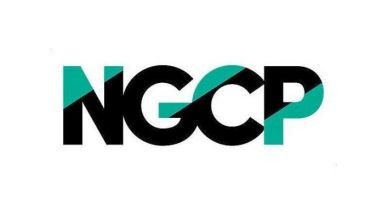Garments firms face closure due to new quota rules
January 28, 2001 | 12:00am
Over 500 garments companies are facing closure this year and over 10,000 workers are facing unemployment as the government forfeits their export quota allocation under the new rules of the Garments and Textile Export Board (GTEB).
Industry sources revealed yesterday that out of the 892 companies that have been awarded their quota allocation, 58 percent or 517 companies would no longer qualify based on the new requirements set by the GTEB.
Under the new rules, manufacturers with below average freight on board (FOB) price and local value-added (LVA) would no longer qualify to bid for a quota allocation and allocations that have been awarded would be subsequently forfeited.
The rule was an offshoot of GTEB’s new Cap and Rank policy where garments manufacturers and exporters would be ranked according to their FOB price and LVA.
Under the old rules, exporters were ranked based only on their LVA to ensure that the companies supported by the allocation program were generating as much local employment as possible and using as much local content as possible.
Under the new policy, however, GTEB made a listing of all garments manufacturers and exporters and their average FOB/LVA prices for the year 2000.
Top-ranking companies would get the first crack at the quota allocation while companies with low FOB and LVA would get low priority in the allocation of the quota.
According to the source, however, this policy would effectively weed out over 50 percent of all garments manufacturers. The source said that based on this listing, an average of 58 percent of all manufacturers would be disqualified from every quota category.
If these companies are not able to apply and get a quota allocation, the source said they would effectively be forced to shut down their operations since they were dependent on an assured export market for their products.
At the outset, the source said 517 firms employing an average of 200 workers, would not be able to get an allocation.
The policy had long been the cause of bitter disagreement between GTEB and garments manufacturers, compelling then Trade and Industry Secretary Jose Pardo to shelf the new rules. However, the rules were subsequently restored and became effective this year.
According to GTEB Director Felicitas Agoncillo-Reyes, however, the industry ranking was intended to give exporters with higher FOB more allocation instead of basing the ranking only on LVA.
According to Reyes, the industry was gearing towards 2004 when the export quotas would be totally scrapped in compliance with the provisions of the World Trade Organization (WTO) agreements.
The idea was to encourage high-value products headed for high-end markets where Reyes said the government wanted the industry to focus in a post-quota era.
Under the new rules, the annual export quota allocation would be distributed in November and February with the allocation based on the ranking of garment exporters.
Industry sources revealed yesterday that out of the 892 companies that have been awarded their quota allocation, 58 percent or 517 companies would no longer qualify based on the new requirements set by the GTEB.
Under the new rules, manufacturers with below average freight on board (FOB) price and local value-added (LVA) would no longer qualify to bid for a quota allocation and allocations that have been awarded would be subsequently forfeited.
The rule was an offshoot of GTEB’s new Cap and Rank policy where garments manufacturers and exporters would be ranked according to their FOB price and LVA.
Under the old rules, exporters were ranked based only on their LVA to ensure that the companies supported by the allocation program were generating as much local employment as possible and using as much local content as possible.
Under the new policy, however, GTEB made a listing of all garments manufacturers and exporters and their average FOB/LVA prices for the year 2000.
Top-ranking companies would get the first crack at the quota allocation while companies with low FOB and LVA would get low priority in the allocation of the quota.
According to the source, however, this policy would effectively weed out over 50 percent of all garments manufacturers. The source said that based on this listing, an average of 58 percent of all manufacturers would be disqualified from every quota category.
If these companies are not able to apply and get a quota allocation, the source said they would effectively be forced to shut down their operations since they were dependent on an assured export market for their products.
At the outset, the source said 517 firms employing an average of 200 workers, would not be able to get an allocation.
The policy had long been the cause of bitter disagreement between GTEB and garments manufacturers, compelling then Trade and Industry Secretary Jose Pardo to shelf the new rules. However, the rules were subsequently restored and became effective this year.
According to GTEB Director Felicitas Agoncillo-Reyes, however, the industry ranking was intended to give exporters with higher FOB more allocation instead of basing the ranking only on LVA.
According to Reyes, the industry was gearing towards 2004 when the export quotas would be totally scrapped in compliance with the provisions of the World Trade Organization (WTO) agreements.
The idea was to encourage high-value products headed for high-end markets where Reyes said the government wanted the industry to focus in a post-quota era.
Under the new rules, the annual export quota allocation would be distributed in November and February with the allocation based on the ranking of garment exporters.
BrandSpace Articles
<
>
- Latest
- Trending
Trending
Latest
Trending
Latest
Recommended
























